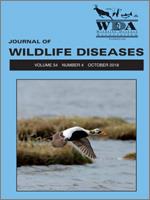Toxoplasma gondii, Neospora caninum, and Encephalitozoon cuniculi are important infectious agents, with T. gondii and E. cuniculi having zoonotic potential. There are two main clonal lineages (types I and II) of T. gondii in Europe, but little is known about genotypes of T. gondii in wild animals. The aim of our study was molecular detection of these three pathogens in tissues of wild red foxes (Vulpes vulpes) from the Czech Republic. Using PCR (B1 gene), we detected T. gondii in 10% of the animals that we tested (n=100); N. caninum and E. cuniculi were not detected. The T. gondii samples were genotyped by single multiplex PCR assay with 15 microsatellite markers. Five samples were successfully genotyped as genotype II, a unique finding for T. gondii isolated from red foxes from the Czech Republic.
How to translate text using browser tools
1 October 2018
Molecular Evidence of Toxoplasma gondii, Neospora caninum, and Encephalitozoon cuniculi in Red Foxes (Vulpes vulpes)
Radka Lukášová,
Jiřina Marková,
Eva Bártová,
Jean-Benjamin Murat,
Kamil Sedlák
ACCESS THE FULL ARTICLE

Journal of Wildlife Diseases
Vol. 54 • No. 4
October 2018
Vol. 54 • No. 4
October 2018
carnivores
encephalitozoonosis
neosporosis
PCR
toxoplasmosis




